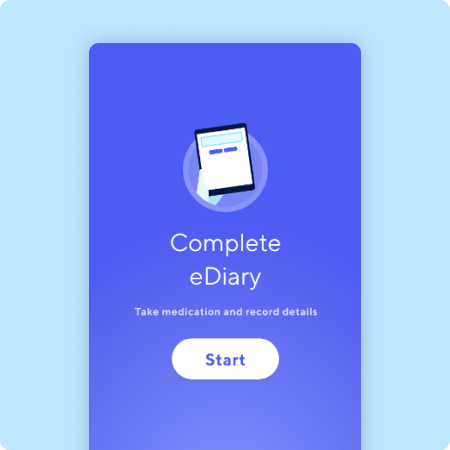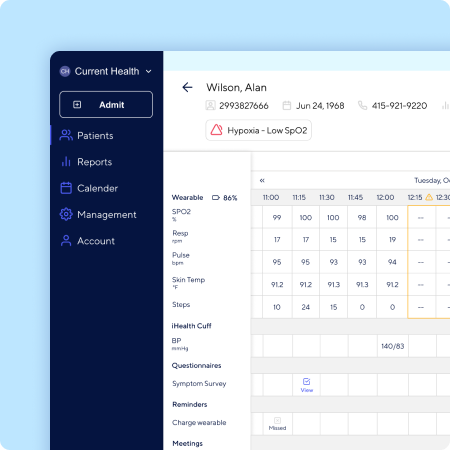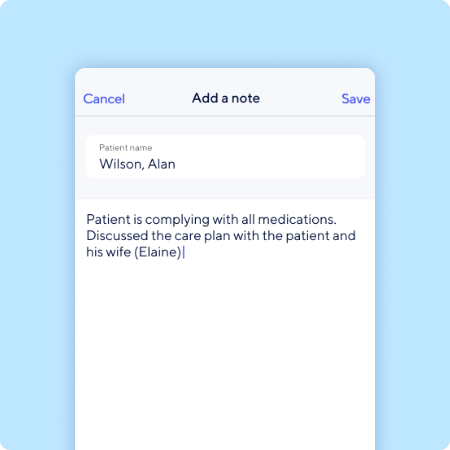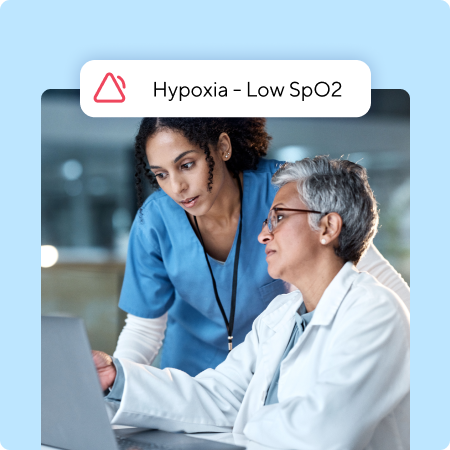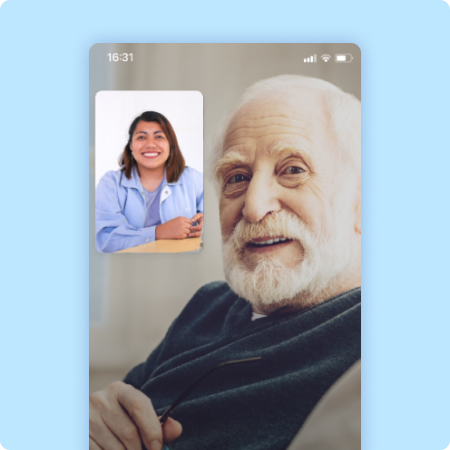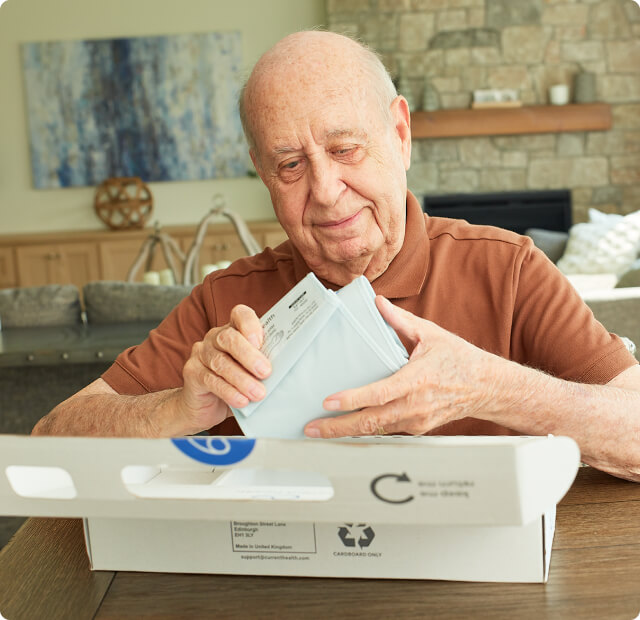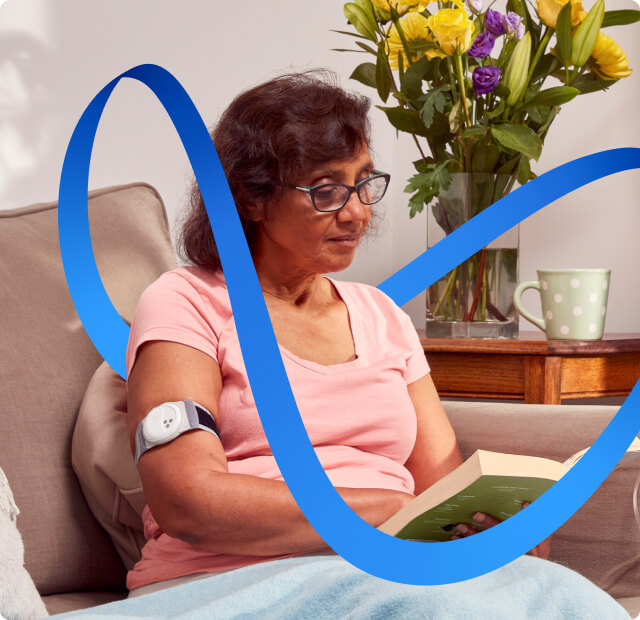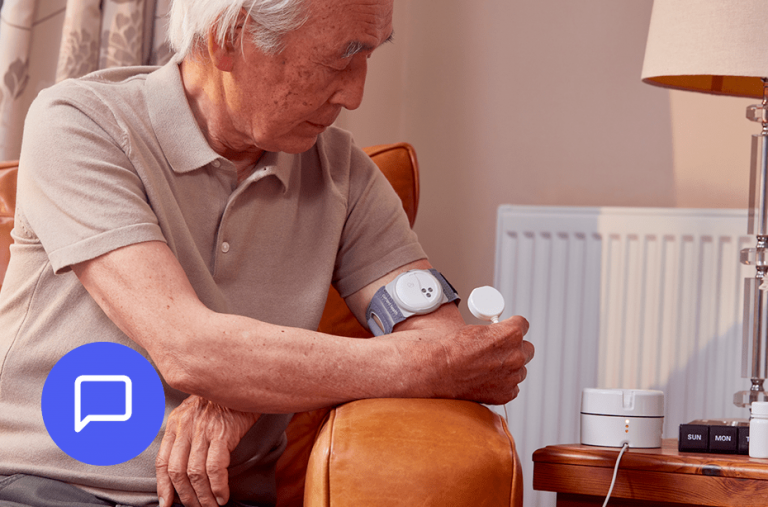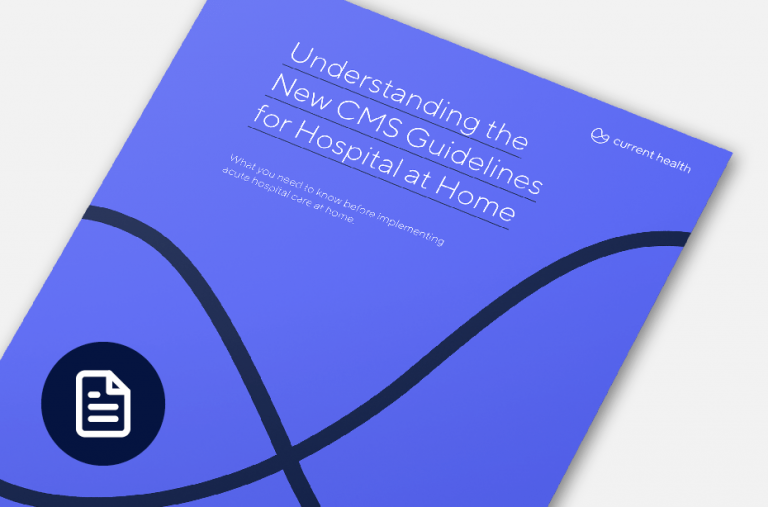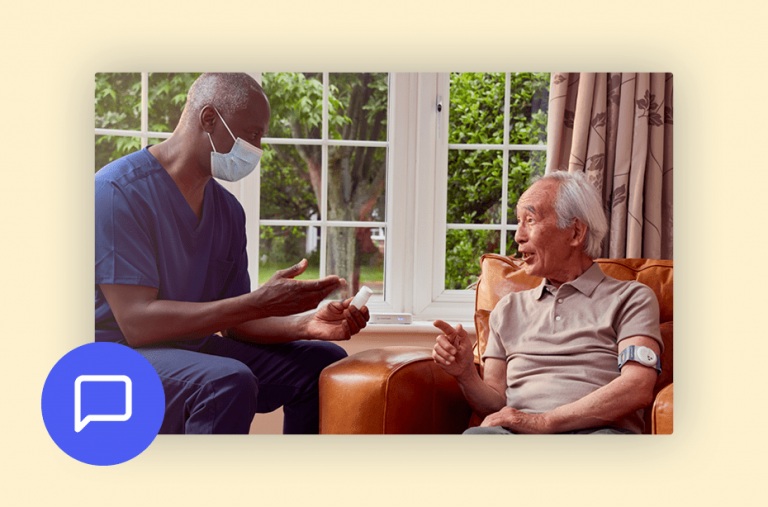Build a safe and effective hospital-at-home program
Deliver home-based acute care with the support of a partner who tackles the foundational challenges.
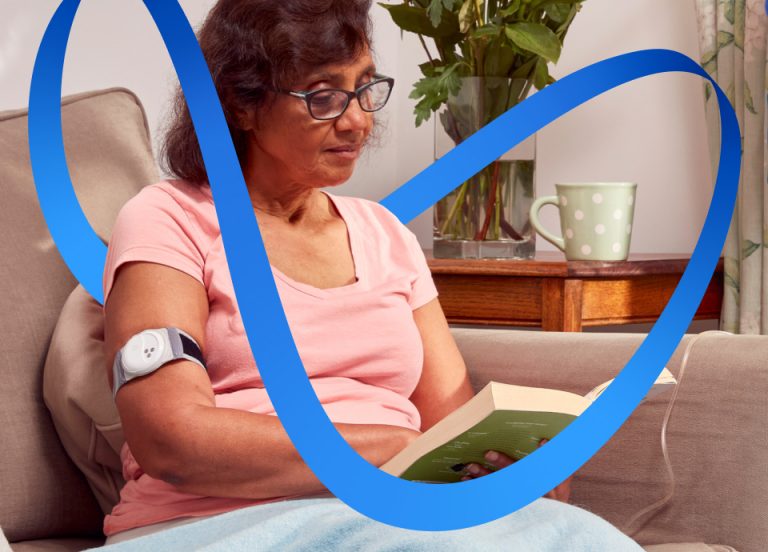
to make hospital at home programs possible.
The Current Health platform enables
deep insights into patient health and supports excellent provider experiences
Continuous and
intermittent monitoring
Get real-time remote patient monitoring and care coordination using our Clinical Dashboard, integrated with your EHR.
Rely on an ecosystem of continuous and intermittent monitoring device options to support a wide range of use cases.
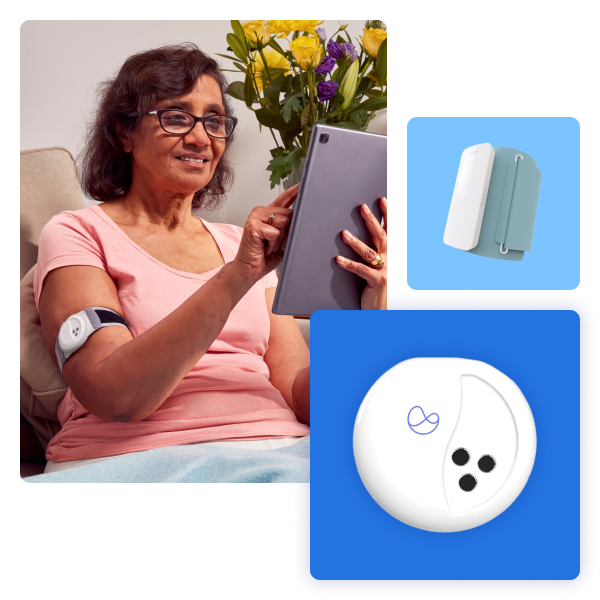
Configurable pathways
and alarms
Receive timely alerts based on customizable parameters for common care scenarios and individual patient requirements.
Our configurable clinical escalation pathways help to mitigate risk and reduce avoidable readmissions
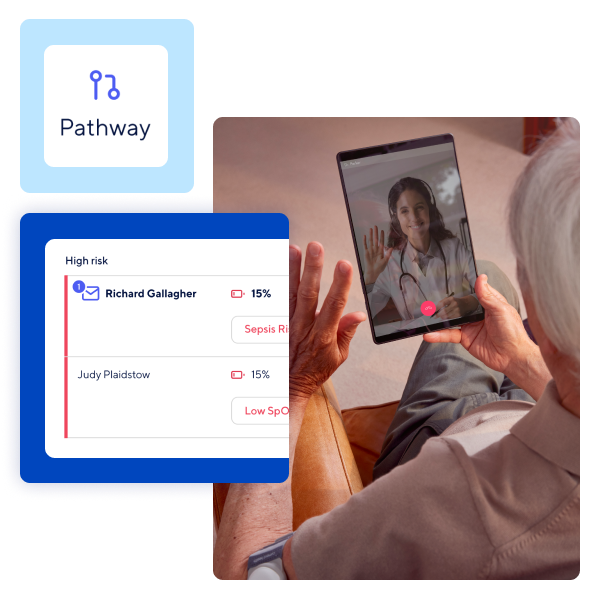
Drive results that matter
30-day readmission rate
NYU Langone
Cost savings in first year
US Military Health System
Bed days saved
Wrightington, Wigan Leigh NHS Foundation Trust
Patient adherence
Defence Health Agency
24/7 Clinical
Command Center
Use our round-the-clock patient monitoring and triaging from our team of clinicians to expand your team’s capacity and scale your program.
Licensed in all 50 states, our team acts as an extension of your staff, executing your protocols and supporting excellent patient experiences.
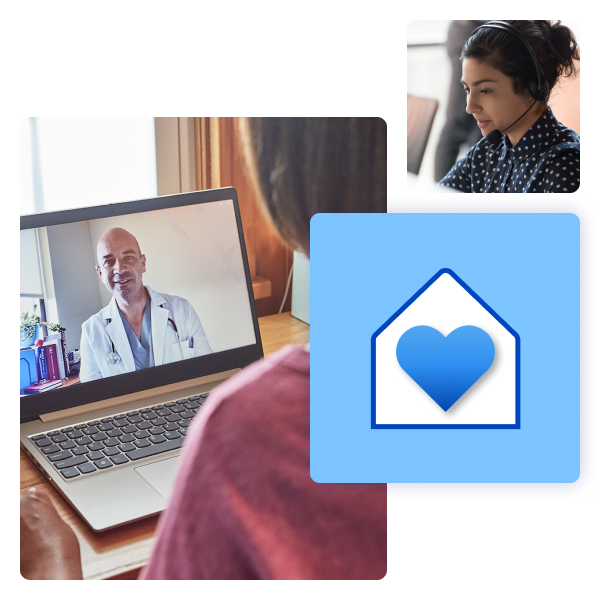
Logistics and Geek Squad
in-home support
Deploy hospital-level care infrastructures in patients’ homes with Best Buy Health’s supply chain management and technology support expertise.
Leverage our expertise in program assessment, design, staff training, and implementation to launch your program.
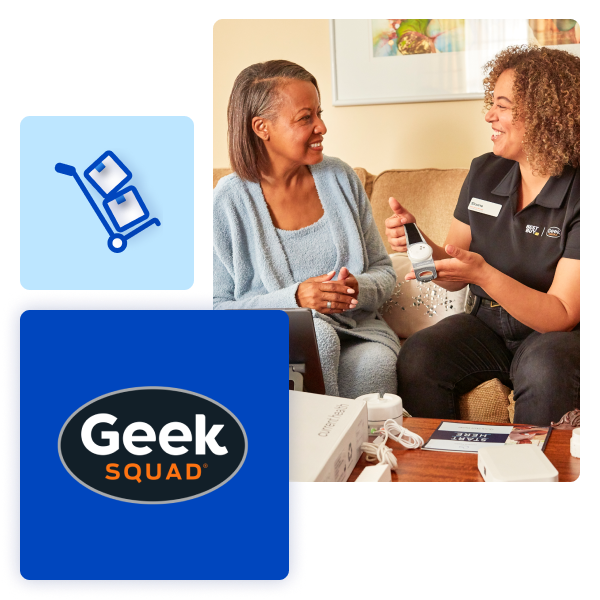
Professional
services
With more than 450 combined years of experience, our professional services team will guide you through designing, and implementing, and scaling your hospital-at-home program.

Patient testimonial
When a severe UTI landed Joy in the emergency department, she and her husband were scared.
Watch Joy recall how the security of the Current Health monitoring helped her safely recover at home.
UMass Memorial Health
UMass Memorial Health has expanded its Hospital at Home program to become one of the nation’s largest.
Explore our case study to learn about the tools and support services driving this growth.

